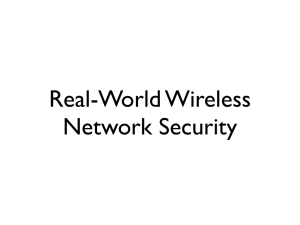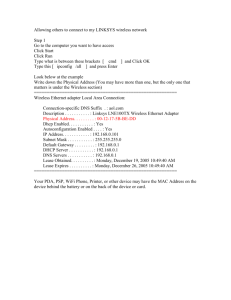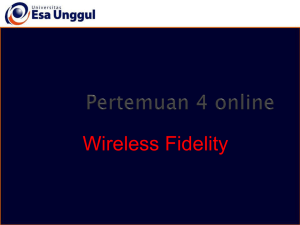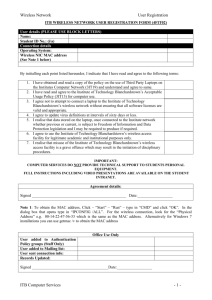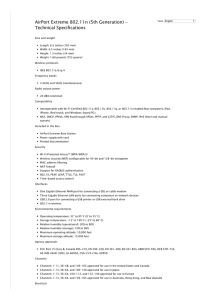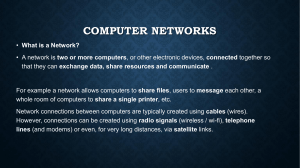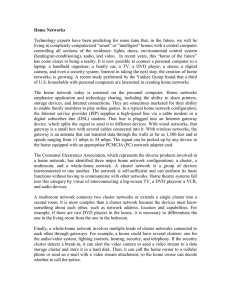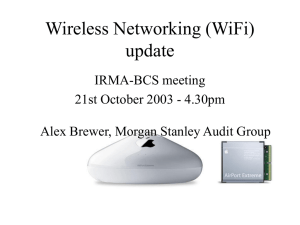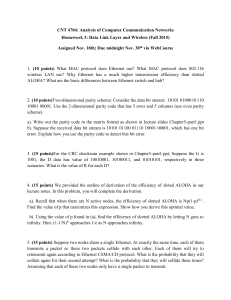Real-World Wireless Network Security
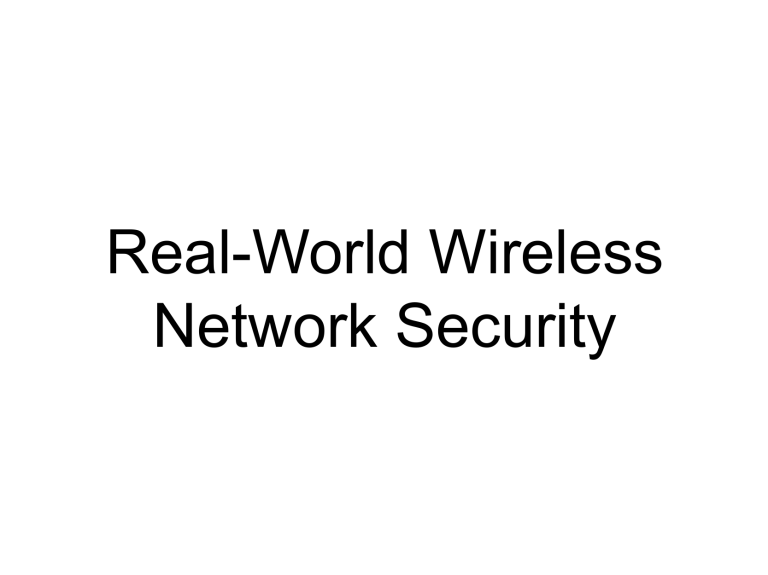
Real-World Wireless
Network Security
What We Want
•
Easy to use
•
Broad compatibility
•
Low administrative overhead
•
No special client software
What We Have
•
Wi-Fi drivers overcomplicate the task of setting SIDs or WEP keys
•
Current Wi-Fi systems do not include any unique client identifiers
•
VPNs, LEAP, 802.11x, etc. require certain cards, drivers and operating systems, tend to be complex and unreliable, and it will be years before we can assume otherwise
The Compromise
•
We cannot trust wireless clients any more than general Internet hosts and will not waste time pretending otherwise
Wireless Setup
•
Stock 802.11b
•
Broadcast SID
•
No WEP
•
Access points on a highly-untrusted
VLAN
Registration
•
The first time a system is connected, all outbound web requests will be redirected to a registration page
(See http://www.net.cmu.edu/netreg/ )
•
Registration provides limited accountability by restricting access to people who already have accounts.
•
A side benefit is the security warning every user will see during the registration process
Registration Details
•
DHCPD v3 allows you to serve different
IP ranges to known MACs
•
Unregistered MACs are assigned a separate IP range with a special DNS server, 30 second lease times and no internet access
•
The registration web server’s IP is returned for every DNS request
Registration Details
•
The registration web server issues a redirect for any HTTP request to the
HTTPS server netreg.example.edu
to avoid browsers caching our page instead of the real www.nytimes.com
•
After authenticating the user’s MAC is added to the registered client list in dhcpd.conf
Security
•
Registered clients are behind NAT and a firewall to protect the internal network from abuse
•
Snort sensor inside the NAT layer
•
Rate-limiting 802.11b is an exercise in optimism but we should do it anyway
Security Details
•
Open internet access limited to the ports used by encrypted protocols for web
(443), email (993, 995), and ssh (22)
•
Unencrypted HTTP is diverted to squid
•
Windows and Mac file sharing limited to two secured servers
•
Everything else is dropped
Known Problems
•
Registration can be bypassed using
MAC spoofing
•
Potentially nasty things may be tunneled over SSL ports
•
SMTP AUTH requires client support
Future Directions
•
Compromise on ease of use and security by allowing PPTP, IPSec or
PPPoE users greater access
•
Bandwidth allocation and traffic shaping
•
Automatic de-registration after long periods of inactivity
•
Automatic IDS-driven firewall rule updates
